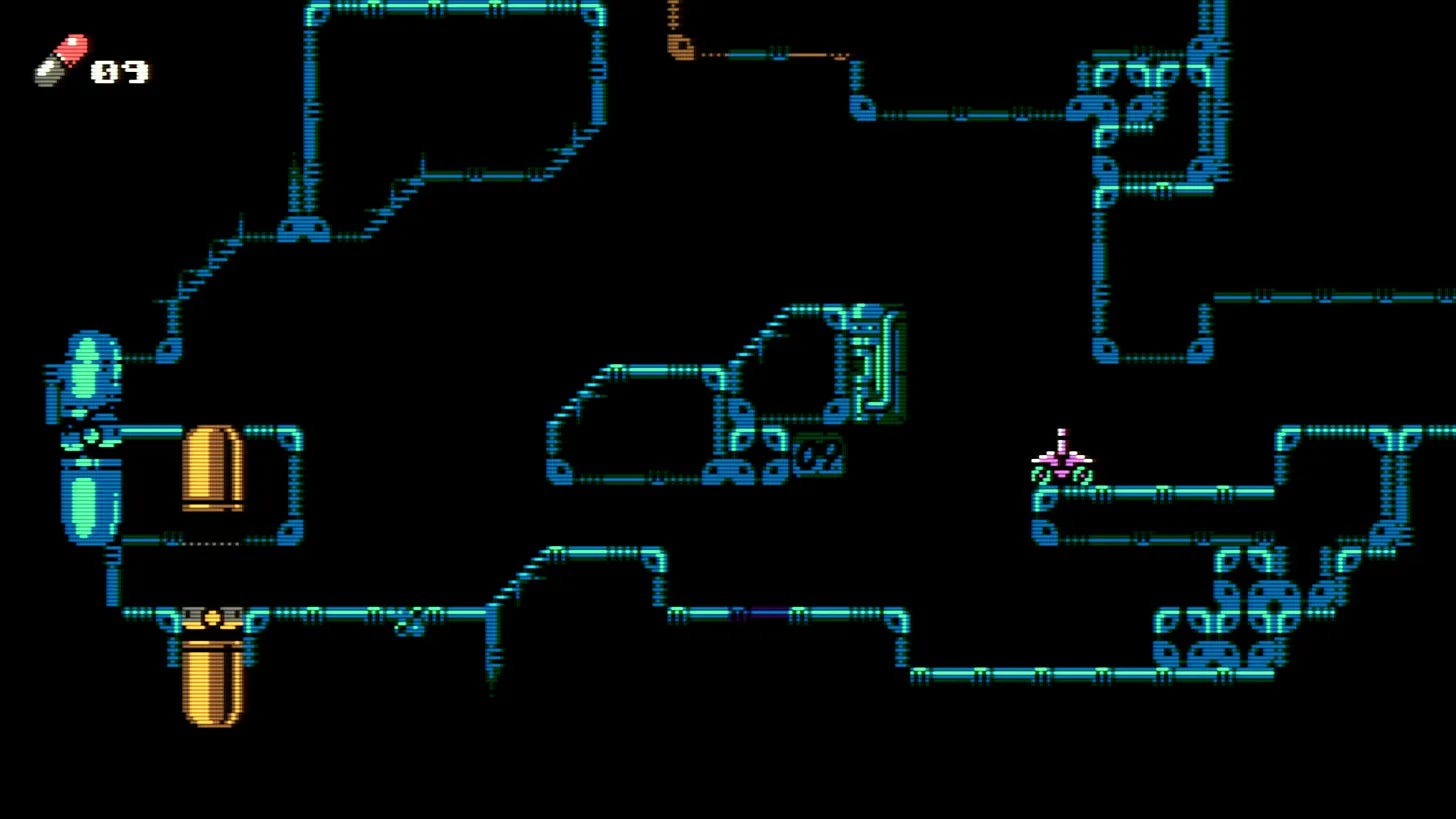Warptank is a brilliant bit of nomenclature, nominative determinism at its finest. It’s about a tank that warps, and that’s exactly what you’ll be doing as you navigate the myriad levels that make up this fascinating game.
Warptank is an interesting thing to get your head around though. Another UFO 50 experience that revels in causing mischief within simplicity. The act of moving, of warping, and shooting whatever may seek to cause you harm is way more complicated than it first looks.
This is a game whose control scheme I struggled with more than Mooncat; a game whose level geometry regularly got the better of me; one within which I found a lot of extremely challenging hand-eye coordination puzzles that felt maddening to bash my head against in the moment, but inevitably brought a cheer to my lungs once I finally bested them.
Warptank is a game of two states. One is the individual levels, found as capsules within this grimy, industrial hub world. You go in, you make your way through until you find an exit, you come out.
The challenges within are also twofold: You have enemies to avoid, and you have a very specific sequence of moves required to navigate the spaces you move through.
You can only warp in a straight line, up and down relative to your position, not the screen, and the majority of the game’s challenge is understanding how you use your environment to get around this constraint.
Add to the mix level modifiers like moving platforms, hoppers and timed switches, and things get considerably more complex.
Checkpoints are plentiful, thankfully. There is little lost in failure here, and the game having a cumulative progression rather than a more constrained one and done approach of some other games in the collection meant that I found it easier to stomach frustration and pick away at these levels as and when I felt like it.
There’s that second aspect of the game, however, in that the hub world itself is one big navigation puzzle, one that, sadly, I don’t think is as successful in execution.
This space has been designed with exploration in mind, but I often found myself going in circles, completely unsure of where to go next. It has that standard videogame progression path in that completion of levels unlocks new paths and I will admit there’s a quiet brilliance in how it's not always clear how crucial a specific block being in a specific place is to allowing you to navigate this world.
But I quickly found myself wishing for a simpler level select screen instead. It’s not a death knell, and there’s some hidden secrets to be found within this space, as is to be expected, but sometimes the better option is the simpler one, and the contained levels are where the bulk of the game’s sauce lies.
A really cool idea, brought to life brilliantly. When I made my first pass through all fifty games in the collection back in September I immediately clocked this as an experience to eagerly anticipate upon my return.
Some five months later, it did not disappoint.







